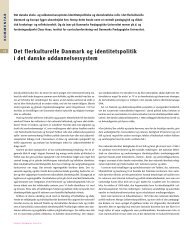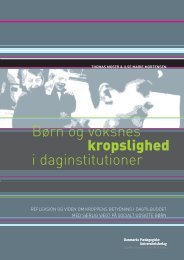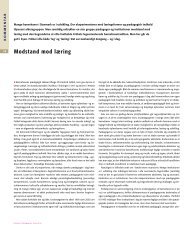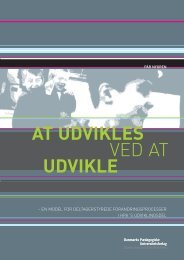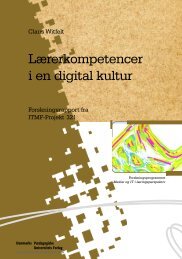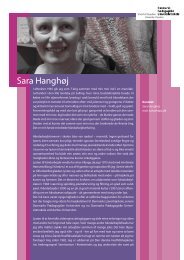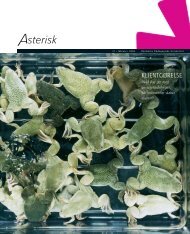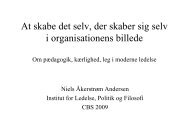SRI-Teknisk rapport-sen.v13 - DPU
SRI-Teknisk rapport-sen.v13 - DPU
SRI-Teknisk rapport-sen.v13 - DPU
Create successful ePaper yourself
Turn your PDF publications into a flip-book with our unique Google optimized e-Paper software.
N.3 Is there sufficient justification for why the<br />
study was done the way it was?<br />
N.4 Was the choice of research design appropriate<br />
for addressing the research question(s) posed?<br />
N.5 Have sufficient attempts been made to establish<br />
the repeatability or reliability of data collection<br />
methods or tools?<br />
N.6 Have sufficient attempts been made to establish<br />
the validity or trustworthiness of data collection<br />
tools and methods?<br />
N.7 Have sufficient attempts been made to establish<br />
the repeatability or reliability of data analysis?<br />
N.8 Have sufficient attempts been made to establish<br />
the validity or trustworthiness of data analysis?<br />
N.9 To what extent are the research design and<br />
methods employed able to rule out any other<br />
sources of error/bias which would lead to alternative<br />
explanations for the findings of the study?<br />
118<br />
sary. Teachers reviewed the questionnaires to<br />
ensure that the important outcomes and processes<br />
were being measured.<br />
Yes (please specify)<br />
Yes. The methods are relevant for the aims of the<br />
study, the study is well linked to existing research,<br />
and it is performed at a time where changes in test<br />
performance are measurable. The danger is that<br />
the study links teachers focus on current perceptions<br />
with a long term growth rate.<br />
yes, completely (please specify)<br />
Yes, completely. The study compares changes in<br />
test scores during a period with classroom and<br />
school variables, which seems an adequate way to<br />
monitor consequences of a program over time. It<br />
would have gained by taking into account the<br />
differences within the individual school.<br />
No, none (please specify)<br />
No. We get no insight in the way the register date<br />
or the questionnaires are collected.<br />
Yes, some attempt (please specify)<br />
Yes. The authorities are supposed to give the right<br />
data, and the relevant teachers were reached<br />
through the schools.<br />
Yes (please specify)<br />
Yes. The study uses standard tools and discusses its<br />
use in great detail. The authors discuss possible<br />
consequences of sampling errors.<br />
Yes, good (please specify)<br />
Yes, good. Authors discuss problems with sample<br />
sizes and with comparing an assessment program<br />
that have been in place for several years with<br />
current teacher perceptions.<br />
A little (please specify)<br />
A little. As the authors point out themselves, the<br />
used model ignores important differences that may<br />
exist among teachers (and classes) within schools.<br />
These differences might be bigger than the differences<br />
between schools.<br />
N.10 How generalisable are the study results? Details<br />
The study results seem generalisable. The findings<br />
are not surprising and to a large degree explainable.



